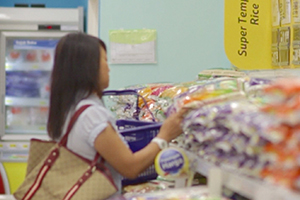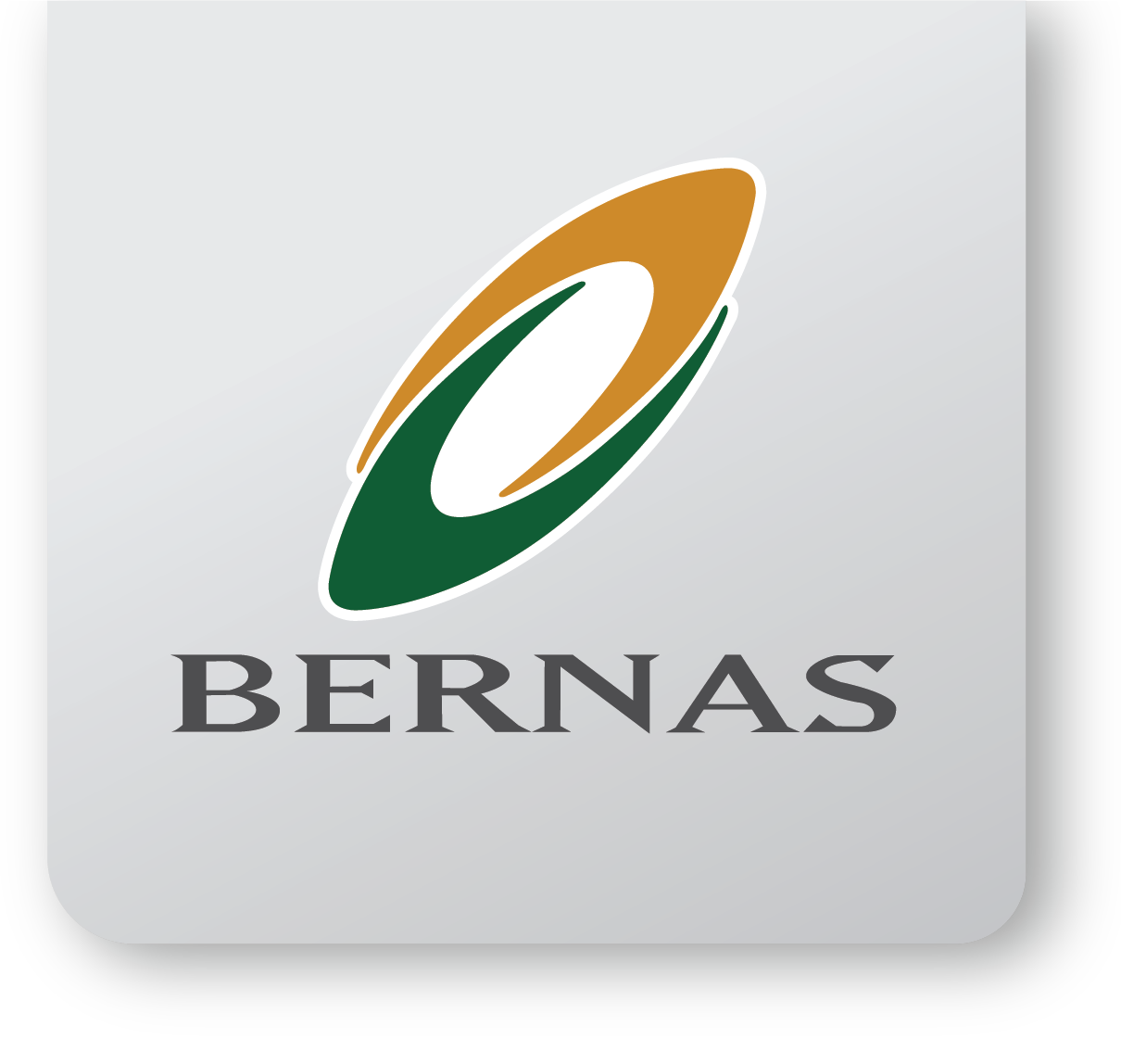Honouring Our Roots
Ours is a legacy of almost three decades. As we travel through our days, each milestone is a stepping stone. We seek, we learn, and we grow through the experiences. It enriches our organisation and gave us a sense of purpose. We honour our roots to embrace our future.
2014
BERNAS Delisted

18 April 2014, BERNAS delisted from Main Market of Bursa Securities.
2014
2011
Hot Water Generator (HWG)

BERNAS promotes sustainable environmental practices through usage of Hot Water Generator (HWG) for paddy drying process at its KBBs.
2011
EPP11

BERNAS was invited to join EPP11 as anchor company to develop 5,100 hectares of paddy land in Batang Lupar, Sri Aman, Sarawak.
2011
2011
EPP10

BERNAS signed an MoU with MADA to jointly operate the EPP10 project. Both successfully completed the first 5000 hectares of planting and harvesting.
2010
Economic Transformation Programme

BERNAS was invited to participate in the Economic Transformation Programme (ETP) to scale up and strengthen productivity of paddy farming in Muda area, Kedah.
2010
2009
Skim Upah Mengering & Kisar (SUMK)

BERNAS introduced the Skim Upah Mengering dan Kisar (SUMK), a scheme for Bumiputera Millers to capture a larger volume of paddy and rice.
2009
Program Rakan Ladang (PRL) was Launched

BERNAS assisted the farming community in all aspects of management, business and operations to ensure their welfare and livelihoods are not compromised.
2009
2009
Group of Tradewinds (M) Berhad

9 December 2009, BERNAS became a member of Tradewinds (M) Berhad Group of Companies.
2008
9th Malaysia Plan

The escalation of international rice prices in early 2008 led to domestic price instability, prompting the Government Subsidised Rice (GSR) scheme to address this issue.
2008
2008
National Food Security

National rice stockpile was increase to 292,000mt to ensure domestic supply availability and stability.
2008
Global Rice Crisis
The year of global rice price volatility, but BERNAS remained resilient and continue to drive domestic market's stability.
2008
2006
Bukit Raya Warehouse
Ground breaking ceremony marks the commencement of construction of Bukit Raya Warehouse.
2006
Umrah & Ziarah

BERNAS initiated and sponsored the first batch of "Umrah & Ziarah" participants under "Petani Setia BERNAS" programme.
2006
2005
Domestic Operation Application (DOA)
Farmer's database system was upgraded. DOA system was installed to better manage subsidy disbursement and monitoring.
2005
Nur Ikhlas CSR Programme Was Launched

In collaboration with the Ministry of Women & Family Development and Department of Social Welfare. Now it is known as Ikhlas BERNAS.
2005
2005
BCSB Sarawak
BCSB Sarawak (wholly owned subsidiary of BERNAS) entered a subscription agreement with Liansin Trading to strengthen its East Malaysia business network.
2004
Program Rakan Kilang

A smart partnership programme between BERNAS and Bumiputera Millers was initiated to assist the millers.
2004
2004
Pilihan BERNAS Campaign was Launched
A brand building strategy aimed at educating consumers in choosing the best quality rice in the market.
2004
Cyclonic Husk Furnaces (CHF)
To reduce carbon footprint, 100% of rice husk produced at the Kilang Beras BERNAS (KBB) is used as renewable energy for paddy drying, replacing diesel.
2004
1998
Farmer's Database System
Convergence System, a digital farmer's database system was first introduced.
1997 - 1998
BERNAS Listed

25 August 1997, BERNAS listed on Bursa Malaysia. Regional financial crisis gave rise to another bout of rice crisis. BERNAS as the sole importer took the heat and averted the scenario of 1973.
1997 - 1998
1996
BERNAS Moved Downstream

Moved downstream into rice wholesaling through joint ventures with subsidiaries.
1996
BERNAS Privatised
Padiberas Nasional Berhad (BERNAS) was privatised on 12 January 1996.
1996
1994
LPN Incorporated
7 July 1994, LPN was incorporated as Syarikat Padiberas Nasional.
1980
Paddy Price Subsidy Scheme

Paddy Price Subsidy Scheme was implemented to raise farmers' income, considering that rice farmers have the highest poverty incidence among the rural sector. Also introduction of mechanisation in harvesting.
1980
1976 - 1980
3rd Malaysia Plan
The Third Malaysia Plan gave priority to rice production, raising the rice self-sufficiency from 78 percent in 1970 to 92 percent.
1974
Lembaga Padi Negara (LPN)

The LPN or the National Paddy and Rice Board took over the role of rice importation and became the sole rice importer, having learned from the crisis in 1973.
1974
1973
World Food Crisis

World Food Crisis arising from world oil crisis cascaded into a nationwide chronic rice crisis. Since importers failed to bring in rice as this would result in losses, Government brought in rice through LPN.
1971
National Paddy And Rice Board (LPN)

The establishment of the National Paddy and Rice Board (LPN) on 20 October 1971 resulted in an unified and systematic management of the paddy and rice industry. LPN also acted as foodgrain management agency.
1971
1971
Self Sufficiency Levels (SSL)

The national rice SSL target was scaled down to 90 percent due to fears of production surplus.
1969
Bank Pertanian Malaysia (BPM)

Bank Pertanian Malaysia (BPM) was formed to provide credit to farmers.
1969
1969
MARDI
 Malaysian Agricultural Research and Development Institute (MARDI) was formed for paddy production research such as rice breeding, agronomic practices and soil management.
Malaysian Agricultural Research and Development Institute (MARDI) was formed for paddy production research such as rice breeding, agronomic practices and soil management.
1967
Paddy And Rice Marketing Board (PRMB)
Paddy and Rice Marketing Board (PRMB), under Federal Agricultural Marketing Authority (FAMA), was established to perform the marketing of paddy.
1967
1966 - 1970
MADA & KADA

Expenditures for irrigation and drainage were increased and channelled into MADA (Muda Agricultural Development Authority) and KADA (Kemubu Agricultural Development Authority).
1966 - 1970
1st Malaysia Plan

Rice, being the nation's staple food, was deemed as the strategic crop. 12.5 percent of the Malaysian government's annual national budget went to the rice support system.
1966 - 1970
1957
Independence of Malaya

Full SSL became the target for this newly independent nation.
1956
Federation of Malaya Rice Committee

Establishment of Federation of Malaya Rice Committee.
1956
1949
Guaranteed Minimum Price (GMP)

The Guaranteed Minimum Price (GMP) policy was introduced to raise paddy production through a guaranteed floor price.
1949
Rice Stockpile Scheme (RSS)

Rice Stockpile Scheme (RSS), administered by the Ministry of Commerce and Industry, was implemented to provide reserve rice stock to meet domestic emergency rice supply.
1949
1942 - 1945
High Focus on SSL

Overall rice shortage during and after World War II had led to high focus on SSL.
1930 - 1940
Medium Focus on SSL

Focus on SSL started to take place with the establishment of Rice Cultivation Committee (RCC) to encourage rice cultivation in Malaya in 1930, along with the formation of Drainage and Irrigation Department in 1932 and Rice Commission in 1933. In 1939, restrictions on transfer of land titles were even applied to protect and increase SSL.
1930 - 1940
1900 - 1930
Low Focus on SSL

During the colonial times, reliance more on imports from rice-exporting countries like Thailand, India and Burma. Local production was neglected.
